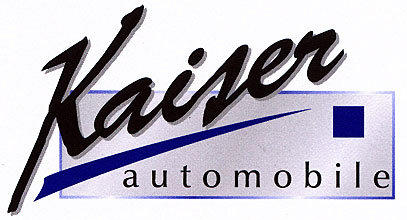Kaiser


Kaiser Motors brand history
Automobiles were made by kaiser Motors (formerly formerly Kaiser-Frazer NNPS Corporation Run, Michigan, United States, from 1945 to 1953. In 1953, Kaiser merged with WillysOverland to form Willys Motors Incorporated, transferring its production operations to the Willys plant at Toledo, Ohio. The firm changed its name to Kaiser Jeep Corporation in 1963. Kaiser Motors produced autos in a lot of places round the world together with the corporate headquarters as well as principal facility at Willow Run, Michigan.
-
 Kaiser Manhatten
Kaiser Manhatten
-
 Kaiser Darrin FK 161
Kaiser Darrin FK 161
-
 Kaiser 4-dr Sedan
Kaiser 4-dr Sedan
-
 Kaiser M35
Kaiser M35
-
 Kaiser Deluxe
Kaiser Deluxe
-
 Kaiser Manhattan 4-dr Sedan
Kaiser Manhattan 4-dr Sedan
-
 Kaiser DeLuxe 2-Door Sedan
Kaiser DeLuxe 2-Door Sedan
-
 Kaiser Henry J Corsair Deluxe
Kaiser Henry J Corsair Deluxe
-
 Kaiser Unknown
Kaiser Unknown
-
 Kaiser De Luxe 4dr
Kaiser De Luxe 4dr
-
 Kaiser M170C XT-2
Kaiser M170C XT-2
-
 Kaiser Manhattan
Kaiser Manhattan
-
 Kaiser 4 door sedan
Kaiser 4 door sedan
-
 Kaiser Carolina
Kaiser Carolina
-
 Kaiser M35A2 tanker
Kaiser M35A2 tanker
-
 Kaiser M718A-1
Kaiser M718A-1
-
 Kaiser Manhattan 4dr
Kaiser Manhattan 4dr
-
 Kaiser M35A-1
Kaiser M35A-1
-
 Kaiser M931A-1 5-ton
Kaiser M931A-1 5-ton
-
 Kaiser M920A-2 20-ton
Kaiser M920A-2 20-ton
-
 Kaiser C101 Jeepster Commando
Kaiser C101 Jeepster Commando
-
 Kaiser M35A1
Kaiser M35A1
-
 Kaiser Carabela Hearse Car
Kaiser Carabela Hearse Car
-
 Kaiser Special sedan
Kaiser Special sedan
-
 Kaiser M813A-1 6x6
Kaiser M813A-1 6x6
-
 Kaiser Henry J Corsair
Kaiser Henry J Corsair
-
 Kaiser M113A1
Kaiser M113A1
-
 Kaiser M35A-32 6x6
Kaiser M35A-32 6x6
-
 Kaiser M35A1 6x6
Kaiser M35A1 6x6
-
 Kaiser M715
Kaiser M715
-
 Kaiser Caravella
Kaiser Caravella


Go Motors Blog
Top 10 Best Chevrolet Models of All Time
9 Unique Ways to Customize Your Car
How to Find the Best Tow Truck Companies
The Most Valuable Parts on a Car to Scrap
5 Tips for Finding a Good Mechanic You Can Trust
7 Driving Techniques and Other Tips for Fuel Efficiency
Car Repair at Home: 4 Easy DIY Fixes That Anyone Can Do
Shady Car Mechanic Tricks You’ve Never Known Before
Your Guide to the New Skyactiv-X Engine from Mazda
View All Recent Posts
-
​Craigslist date ends with woman found tied up, bag over her head
-
Detroit Motor Show presented the best designed vehicles of 2012.

